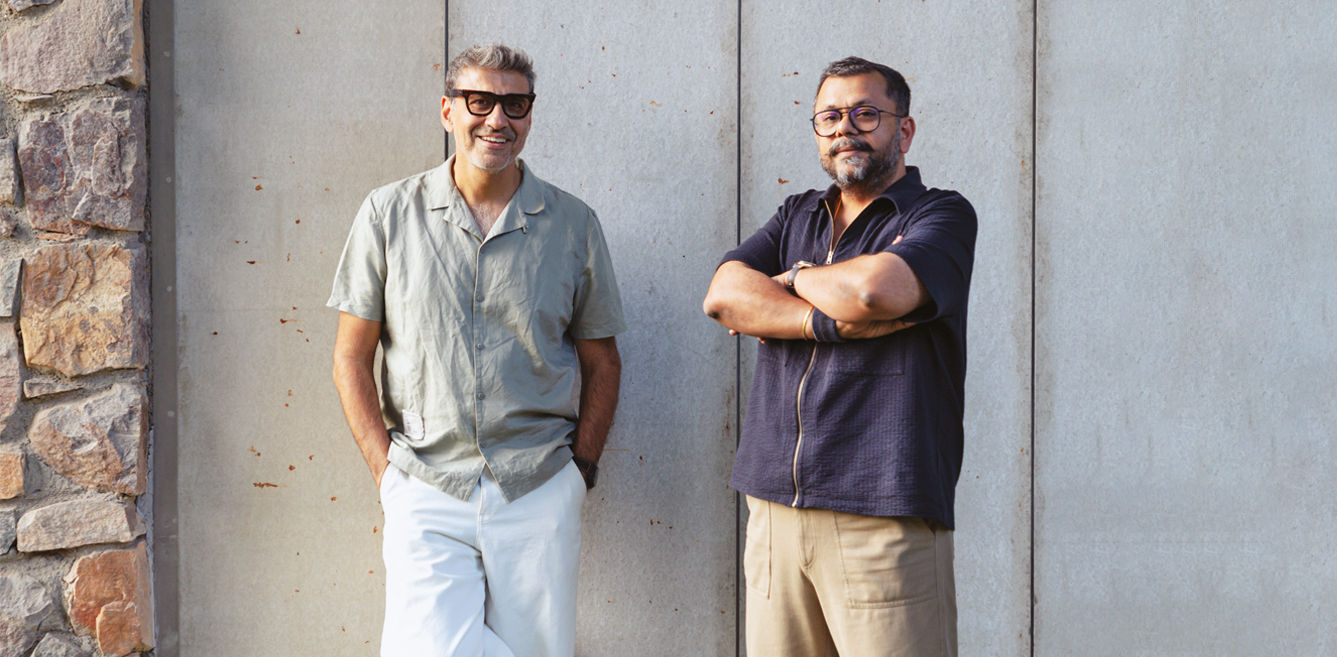

At groupDCA, Amit Aurora and Rahul Bansal approach mood boarding as a strategic exercise, beginning with an in-depth analysis of the project’s purpose, context, and emotional impact. Their design philosophy revolves around crafting spaces that resonate with their intended function—whether calming, bold, or inviting. In our February 2025 issue, we explore how they create mood boards that guide the design process with precision and intent.
How has your mood board creation process evolved with digital tools, and what balance do you strike between physical and digital elements in your conceptual phase?
Digital tools have streamlined the process of creating mood boards, offering efficiency, precision, and a wealth of inspiration at our fingertips. Yet, physical elements remain essential, bringing depth and authenticity that digital platforms cannot replicate. By blending the two, we bridge imagination and reality—digital boards help us visualise ideas swiftly. At the same time, physical samples like fabrics, stone, and wood ground the concept in materiality and help us experience the tangible character of the space. This balance ensures our designs are innovative and rooted, feel physically comfortable and thoughtfully designed.
Walk us through your thought process when you begin a new mood board – what elements do you consider first, and how do you layer colours, textures, and materials to build your narrative?
When starting a new mood board, we analyse the project’s core—its purpose, context, and the emotions it should evoke. This foundation shapes the choice of colours, textures, and materials. Colours set the tone, whether calm, bold, or inviting, while textures add depth, from smooth, polished surfaces to raw, organic finishes. Materials tie it all together, anchoring the narrative in authenticity. We build layer by layer, ensuring each element complements the others, creating a cohesive story that reflects the project’s identity while sparking a sense of connection and curiosity.
How do you use mood boards to communicate with clients, and what techniques have you developed to help them understand your vision through these visual tools?
Mood boards are our bridge to clients, translating abstract ideas into a visual language they can connect with. We curate them to reflect the project’s essence, using colours, textures, and materials that resonate with its story. We layer these with references like sketches, photographs, and material samples, creating a tactile and immersive experience that helps with better understanding. We also encourage open dialogue, ensuring clients see how each element contributes to the larger vision. This approach helps align expectations and brings clarity and collaboration from the conceptual phase.
Grab a copy of our February 2025 issue to read the full story! Click here to subscribe!
The architectural landscape of Rajasthan is steeped in a rich tradition of historic masonry, reflecting…
Are you a corporate employee spending 10+ hours in an ordinary cubicle that's fused in…
Modern Indian homes are no longer bound by their physical vicinity. They have outgrown our…
Häcker Kitchens, a brand synonymous with quality and innovation, has a rich legacy that spans…
In this home designed by Sonal R Mutha and Aniketh Bafna, founders and principal designers…
Essentia Home’s journey in redefining luxury interiors took a bold new step as it opened…